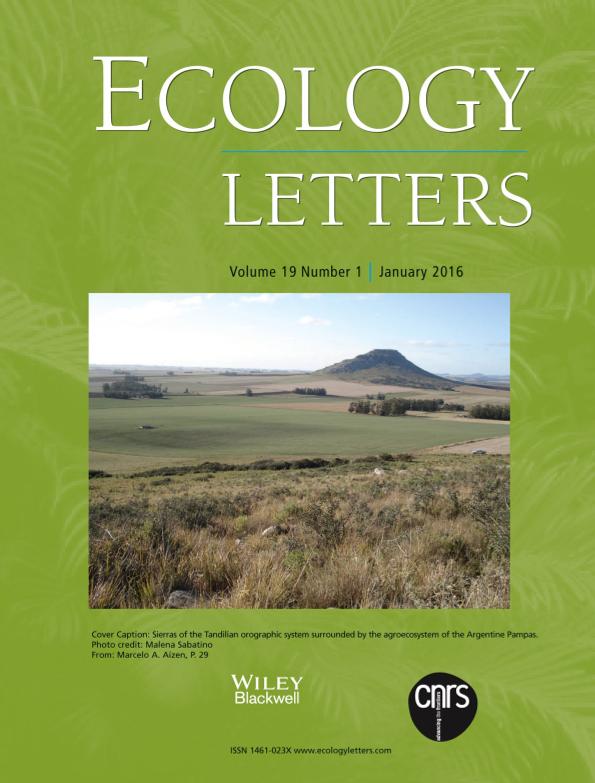Artículo
The phylogenetic structure of plant-pollinator networks increases with habitat size and isolation
Aizen, Marcelo Adrian ; Gleiser, Gabriela Laura
; Gleiser, Gabriela Laura ; Sabatino, Cristina Malena
; Sabatino, Cristina Malena ; Gilarranz, Luis J.; Bascompte, Jordi; Verdú del Campo, Miguel
; Gilarranz, Luis J.; Bascompte, Jordi; Verdú del Campo, Miguel
 ; Gleiser, Gabriela Laura
; Gleiser, Gabriela Laura ; Sabatino, Cristina Malena
; Sabatino, Cristina Malena ; Gilarranz, Luis J.; Bascompte, Jordi; Verdú del Campo, Miguel
; Gilarranz, Luis J.; Bascompte, Jordi; Verdú del Campo, Miguel
Fecha de publicación:
01/2016
Editorial:
Wiley Blackwell Publishing, Inc
Revista:
Ecology Letters
ISSN:
1461-023X
Idioma:
Inglés
Tipo de recurso:
Artículo publicado
Clasificación temática:
Resumen
Similarity among species in traits related to ecological interactions is frequently associated with common ancestry. Thus, closely related species usually interact with ecologically similar partners, which can be reinforced by diverse co-evolutionary processes. The effect of habitat fragmentation on the phylogenetic signal in interspecific interactions and correspondence between plant and animal phylogenies is, however, unknown. Here, we address to what extent phylogenetic signal and co-phylogenetic congruence of plant-animal interactions depend on habitat size and isolation by analysing the phylogenetic structure of 12 pollination webs from isolated Pampean hills. Phylogenetic signal in interspecific interactions differed among webs, being stronger for flower-visiting insects than plants. Phylogenetic signal and overall co-phylogenetic congruence increased independently with hill size and isolation. We propose that habitat fragmentation would erode the phylogenetic structure of interaction webs. A decrease in phylogenetic signal and co-phylogenetic correspondence in plant-pollinator interactions could be associated with less reliable mutualism and erratic co-evolutionary change. Copyright
Archivos asociados
Licencia
Identificadores
Colecciones
Articulos(CCT - MAR DEL PLATA)
Articulos de CTRO.CIENTIFICO TECNOL.CONICET - MAR DEL PLATA
Articulos de CTRO.CIENTIFICO TECNOL.CONICET - MAR DEL PLATA
Articulos(INIBIOMA)
Articulos de INST. DE INVEST.EN BIODIVERSIDAD Y MEDIOAMBIENTE
Articulos de INST. DE INVEST.EN BIODIVERSIDAD Y MEDIOAMBIENTE
Citación
Aizen, Marcelo Adrian; Gleiser, Gabriela Laura; Sabatino, Cristina Malena; Gilarranz, Luis J.; Bascompte, Jordi; et al.; The phylogenetic structure of plant-pollinator networks increases with habitat size and isolation; Wiley Blackwell Publishing, Inc; Ecology Letters; 19; 1; 1-2016; 29-36
Compartir
Altmétricas



